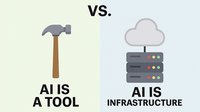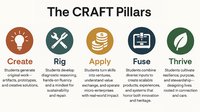BEAVERTON, Oregon, June 24, 2025 — Vernier Science Education recently launched two new wireless sensors—the Go Direct® 2-Axis Force Plate and the Go Direct Turbidity Sensor—for high school- and college-level science. These sensors can be used in a wide range of hands-on investigations to help students easily collect and analyze scientific data as they make real-world connections.
“The use of data-collection technology not only provides students in science disciplines and Career and Technical Education (CTE) pathways with a tangible way to understand difficult-to-measure concepts like friction force and normal force or sediment disturbance, it also helps them simulate industry practices so they are better prepared for future careers,” said Jill Hedrick, CEO of Vernier Science Education. “Sensors, such as our new Go Direct 2-Axis Force Plate and the Go Direct Turbidity Sensor, go a long way in helping students stay engaged, think critically, and apply their learning as they investigate various phenomena.”
The Go Direct 2-Axis Force Plate combines the Go Direct Force Plate and the Lateral Force Accessory into a single wireless tool. It measures both normal and lateral forces, allowing students to explore more complex force interactions—including interactions involving friction, stepping, jumping, and other human-scale actions—beyond single-axis analysis.
With the Go Direct 2-Axis Force Plate, students can specifically evaluate and analyze the reaction forces of static systems, the vector components of forces, and the forces involved in the biomechanics of walking, running, and jumping. This expanded capability makes it ideal for studying Newton’s law and real-world applications in advanced high school and college-level physics, engineering, physical science, and health science courses.
For educators currently using the Go Direct Force Plate or the Vernier Force Plate, there is also the option to purchase the Lateral Force Accessory as an add-on technology without the need to upgrade to the Go Direct 2-Axis Force Plate. With this accessory, educators can capture normal and lateral force data in conjunction with their existing technology.
The new Go Direct Turbidity Sensor helps students analyze various water samples as part of water quality, water treatment, and short- and long-term water pollution investigations. The sensor specifically helps students monitor the turbidity of fresh-water or seawater samples in Nephelometric Turbidity Units (NTU), which is the standard unit used by most water collection agencies and organizations.
The sensor’s simple setup makes it easy to collect data at a field collection site, such as at a nearby lake or stream, or in the classroom. It is ideal for students performing hands-on experiments in courses such as aquatic science, Earth science, environmental science, and natural resources.
Like all Go Direct sensors, the Go Direct 2-Axis Force Plate and the Go Direct Turbidity Sensor connect directly to students’ mobile devices, Chromebooks™, or computers using the award-winning Vernier Graphical Analysis® app. These sensors can be used wired via USB or wirelessly via Bluetooth® wireless technology, enabling educators to choose the solution that fits best for their classroom or laboratory.
The sensors include a rechargeable battery, providing always-ready operation when the technology is being used wirelessly. They are also backed by Vernier’s product support and warranty.
Both the Go Direct 2-Axis Force Plate and the Go Direct Turbidity Sensor are currently shipping.
To learn more about the Go Direct 2-Axis Force Plate, visit https://www.vernier.com/product/go-direct-2-axis-force-plate/. To learn more about the Go Direct Turbidity Sensor, visit https://www.vernier.com/product/go-direct-turbidity/.
About Vernier Science Education
For more than 40 years, Vernier Science Education has been committed to using our experience, knowledge, and passion to create the best and most reliable solutions for STEM education. Our comprehensive solutions include hardware, software, content, assessment, professional development, and technical support. At the heart of Vernier is our deep commitment to being an authentic and trusted partner to STEM educators. We are dedicated to partnering with educators and communities to build a STEM-literate society where students grow up to become knowledgeable citizens who can solve problems, fully contribute to their communities, and drive innovation. For more information, visit www.vernier.com.
# # #











